使用到的库: dlib+Opencv python版本: 3.8 编译环境: Jupyter Notebook (Anaconda3)
0.Dlib人脸特征检测原理
提取特征点:请参考首选抓取多张图片,从中获取特征数据集和平均特征值然后写入 csv 文件 - 计算特征数据集的欧式距离作对比:首先使用Opencv库将摄像头中的人脸框出来,再将摄像头中采取到的人脸特征值与数据集中的每个人的特征均值作对比,选取最接近(欧氏距离最小)的值,将其标注为欧氏距离最小的数据集的人名私信小编01即可获取大量Python学习资源

一、构建人脸特征数据集
1. 安装Dlib
请参考2. 构建自己的数据集
2.1 抓取人脸图片
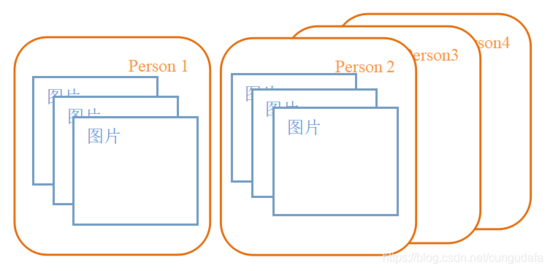
在视频流中抓取人脸特征,并保存为 256*256 大小的图片文件共20张,这就是我们建立数据集的第一步,用来训练人脸识别。
不一定是256*256的尺寸,可以根据自己的需求来调整大小,图片越大训练结果会愈加精确,但也会影响训练模型的时间。
其中:
光线:曝光和黑暗的图片需手动剔除- 请使用同一个设备进行数据采集,不同设备的摄像头采集到的数据集会有出入- 这里采用的是从视频流中进行捕捉截图,也可以自己准备20张左右的人脸图片代码:
import cv2
import dlib
import os
import sys
import random
# 存储位置
output_dir = 'D:/No1WorkSpace/JupyterNotebook/Facetrainset/Num&Name' #这里填编号+人名
size = 256 #图片边长
if not os.path.exists(output_dir):
os.makedirs(output_dir)
# 改变图片的亮度与对比度
def relight(img, light=1, bias=0):
w = img.shape[1]
h = img.shape[0]
#image = []
for i in range(0,w):
for j in range(0,h):
for c in range(3):
tmp = int(img[j,i,c]*light + bias)
if tmp > 255:
tmp = 255
elif tmp < 0:
tmp = 0
img[j,i,c] = tmp
return img
#使用dlib自带的frontal_face_detector作为我们的特征提取器
detector = dlib.get_frontal_face_detector()
# 打开摄像头 参数为输入流,可以为摄像头或视频文件
camera = cv2.VideoCapture(0)
#camera = cv2.VideoCapture('C:/Users/CUNGU/Videos/Captures/wang.mp4')
index = 1
while True:
if (index <= 20):#存储15张人脸特征图像
print('Being processed picture %s' % index)
# 从摄像头读取照片
success, img = camera.read()
# 转为灰度图片
gray_img = cv2.cvtColor(img, cv2.COLOR_BGR2GRAY)
# 使用detector进行人脸检测
dets = detector(gray_img, 1)
for i, d in enumerate(dets):
x1 = d.top() if d.top() > 0 else 0
y1 = d.bottom() if d.bottom() > 0 else 0
x2 = d.left() if d.left() > 0 else 0
y2 = d.right() if d.right() > 0 else 0
face = img[x1:y1,x2:y2]
# 调整图片的对比度与亮度, 对比度与亮度值都取随机数,这样能增加样本的多样性
face = relight(face, random.uniform(0.5, 1.5), random.randint(-50, 50))
face = cv2.resize(face, (size,size))
cv2.imshow('image', face)
cv2.imwrite(output_dir+'/'+str(index)+'.jpg', face)
index += 1
key = cv2.waitKey(30) & 0xff
if key == 27:
break
else:
print('Finished!')
# 释放摄像头 release camera
camera.release()
# 删除建立的窗口 delete all the windows
cv2.destroyAllWindows()
break运行效果:
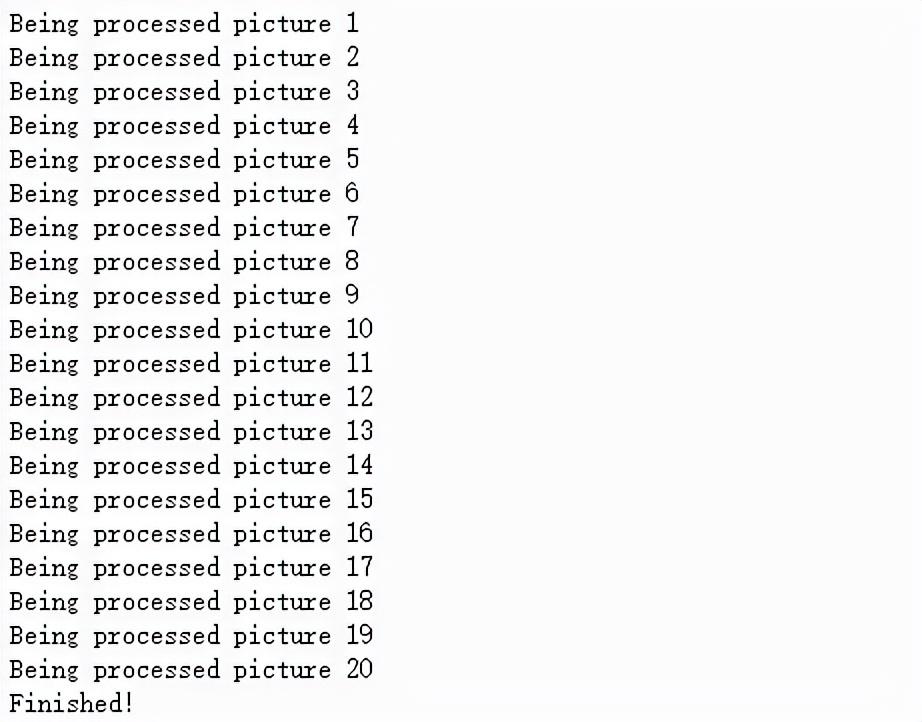
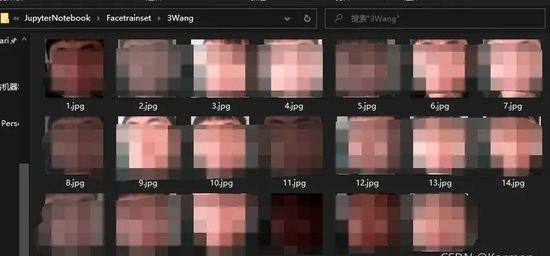
2.2 分析每张人脸的特征值并存入csv文件
根据抓取的图片和人脸识别模型->训练得到的20个的68个特征数据集以及1个平均特征值存入csv文件每张图片的68个特征数据集可以不用存取,他们只是中间量,计算平均值以后就可以抛弃了,这里把他们输出出来只是为了方便学习。
代码:
# 从人脸图像文件中提取人脸特征存入 CSV
# Features extraction from images and save into features_all.csv
# return_128d_features() 获取某张图像的128D特征
# compute_the_mean() 计算128D特征均值
from cv2 import cv2 as cv2
import os
import dlib
from skimage import io
import csv
import numpy as np
# 要读取人脸图像文件的路径
path_images_from_camera = "D:/No1WorkSpace/JupyterNotebook/Facetrainset/"
# Dlib 正向人脸检测器
detector = dlib.get_frontal_face_detector()
# Dlib 人脸预测器
predictor = dlib.shape_predictor("D:/No1WorkSpace/JupyterNotebook/model/shape_predictor_68_face_landmarks.dat")
# Dlib 人脸识别模型
# Face recognition model, the object maps human faces into 128D vectors
face_rec = dlib.face_recognition_model_v1("D:/No1WorkSpace/JupyterNotebook/model/dlib_face_recognition_resnet_model_v1.dat")
# 返回单张图像的 128D 特征
def return_128d_features(path_img):
img_rd = io.imread(path_img)
img_gray = cv2.cvtColor(img_rd, cv2.COLOR_BGR2RGB)
faces = detector(img_gray, 1)
print("%-40s %-20s" % ("检测到人脸的图像 / image with faces detected:", path_img), 'n')
# 因为有可能截下来的人脸再去检测,检测不出来人脸了
# 所以要确保是 检测到人脸的人脸图像 拿去算特征
if len(faces) != 0:
shape = predictor(img_gray, faces[0])
face_descriptor = face_rec.compute_face_descriptor(img_gray, shape)
else:
face_descriptor = 0
print("no face")
return face_descriptor
# 将文件夹中照片特征提取出来, 写入 CSV
def return_features_mean_personX(path_faces_personX):
features_list_personX = []
photos_list = os.listdir(path_faces_personX)
if photos_list:
for i in range(len(photos_list)):
with open("D:/No1WorkSpace/JupyterNotebook/feature/featuresGiao"+str(i)+".csv", "w", newline="") as csvfile:
writer = csv.writer(csvfile)
# 调用return_128d_features()得到128d特征
print("%-40s %-20s" % ("正在读的人脸图像 / image to read:", path_faces_personX + "/" + photos_list[i]))
features_128d = return_128d_features(path_faces_personX + "/" + photos_list[i])
print(features_128d)
writer.writerow(features_128d)
# 遇到没有检测出人脸的图片跳过
if features_128d == 0:
i += 1
else:
features_list_personX.append(features_128d)
else:
print("文件夹内图像文件为空 / Warning: No images in " + path_faces_personX + '/', 'n')
# 计算 128D 特征的均值
# N x 128D -> 1 x 128D
if features_list_personX:
features_mean_personX = np.array(features_list_personX).mean(axis=0)
else:
features_mean_personX = '0'
return features_mean_personX
# 读取某人所有的人脸图像的数据
people = os.listdir(path_images_from_camera)
people.sort()
with open("D:/No1WorkSpace/JupyterNotebook/feature/features_all.csv", "w", newline="") as csvfile:
writer = csv.writer(csvfile)
for person in people:
print("##### " + person + " #####")
# Get the mean/average features of face/personX, it will be a list with a length of 128D
features_mean_personX = return_features_mean_personX(path_images_from_camera + person)
writer.writerow(features_mean_personX)
print("特征均值 / The mean of features:", list(features_mean_personX))
print('n')
print("所有录入人脸数据存入 / Save all the features of faces registered into: D:/myworkspace/JupyterNotebook/People/feature/features_all2.csv")如果要输出每一张图片的特征数据集,这里要用到Python的文件批量生成。
代码运行效果
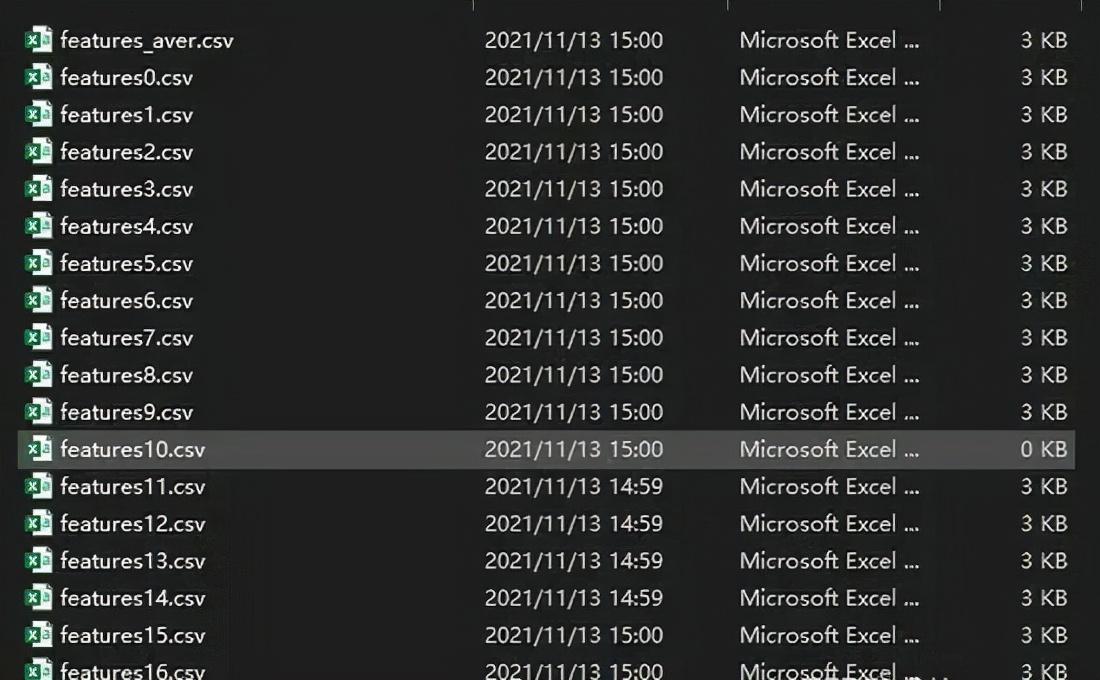
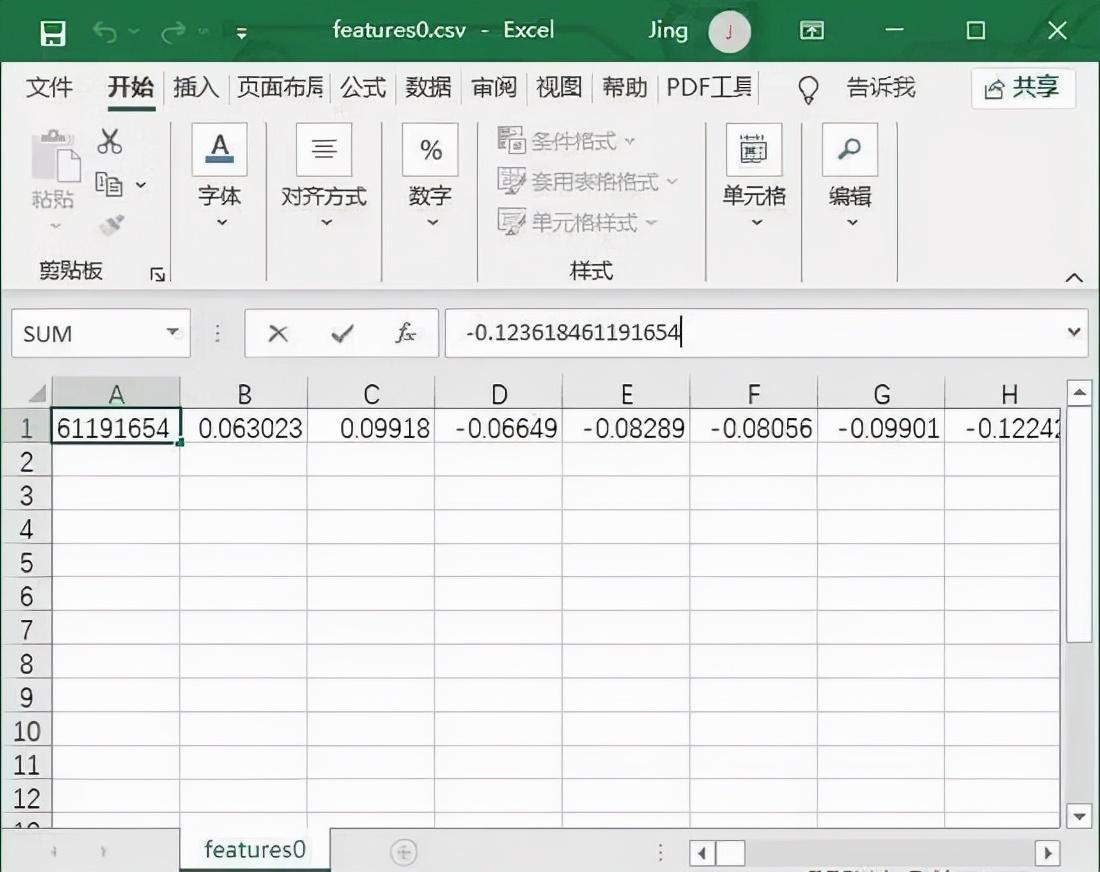

二、识别人脸并匹配数据集
1. 原理:
通过计算特征数据集的 欧氏距离 作对比来识别人脸,取欧氏距离最小的数据集进行匹配。欧氏距离也称欧几里得距离或欧几里得度量,是一个通常采用的距离定义,它是在m维空间中两个点之间的真实距离。在二维和三维空间中的欧氏距离的就是两点之间的距离。使用这个距离,欧氏空间成为度量空间。相关联的范数称为欧几里得范数。较早的文献称之为毕达哥拉斯度量。二维空间公式:


2. 视频流实时识别人脸数据
代码:# 摄像头实时人脸识别
import os
import dlib # 人脸处理的库 Dlib
import csv # 存入表格
import time
import sys
import numpy as np # 数据处理的库 numpy
from cv2 import cv2 as cv2 # 图像处理的库 OpenCv
import pandas as pd # 数据处理的库 Pandas
# 人脸识别模型,提取128D的特征矢量
# face recognition model, the object maps human faces into 128D vectors
# Refer this tutorial: http://dlib.net/python/index.html#dlib.face_recognition_model_v1
facerec = dlib.face_recognition_model_v1("D:/No1WorkSpace/JupyterNotebook/model/dlib_face_recognition_resnet_model_v1.dat")
# 计算两个128D向量间的欧式距离
# compute the e-distance between two 128D features
def return_euclidean_distance(feature_1, feature_2):
feature_1 = np.array(feature_1)
feature_2 = np.array(feature_2)
dist = np.sqrt(np.sum(np.square(feature_1 - feature_2)))
return dist
# 处理存放所有人脸特征的 csv
path_features_known_csv = "D:/No1WorkSpace/JupyterNotebook/feature/features_all.csv"
csv_rd = pd.read_csv(path_features_known_csv, header=None)
# 用来存放所有录入人脸特征的数组
# the array to save the features of faces in the database
features_known_arr = []
# 读取已知人脸数据
# print known faces
for i in range(csv_rd.shape[0]):
features_someone_arr = []
for j in range(0, len(csv_rd.loc[i, :])):
features_someone_arr.append(csv_rd.loc[i, :][j])
features_known_arr.append(features_someone_arr)
print("Faces in Database:", len(features_known_arr))
# Dlib 检测器和预测器
# The detector and predictor will be used
detector = dlib.get_frontal_face_detector()
predictor = dlib.shape_predictor('D:/No1WorkSpace/JupyterNotebook/model/shape_predictor_68_face_landmarks.dat')
# 创建 cv2 摄像头对象
# cv2.VideoCapture(0) to use the default camera of PC,
# and you can use local video name by use cv2.VideoCapture(filename)
cap = cv2.VideoCapture(0)
# cap.set(propId, value)
# 设置视频参数,propId 设置的视频参数,value 设置的参数值
cap.set(3, 480)
# cap.isOpened() 返回 true/false 检查初始化是否成功
# when the camera is open
while cap.isOpened():
flag, img_rd = cap.read()
kk = cv2.waitKey(1)
# 取灰度
img_gray = cv2.cvtColor(img_rd, cv2.COLOR_RGB2GRAY)
# 人脸数 faces
faces = detector(img_gray, 0)
# 待会要写的字体 font to write later
font = cv2.FONT_HERSHEY_COMPLEX
# 存储当前摄像头中捕获到的所有人脸的坐标/名字
# the list to save the positions and names of current faces captured
pos_namelist = []
name_namelist = []
# 按下 q 键退出
# press 'q' to exit
if kk == ord('q'):
break
else:
# 检测到人脸 when face detected
if len(faces) != 0:
# 获取当前捕获到的图像的所有人脸的特征,存储到 features_cap_arr
# get the features captured and save into features_cap_arr
features_cap_arr = []
for i in range(len(faces)):
shape = predictor(img_rd, faces[i])
features_cap_arr.append(facerec.compute_face_descriptor(img_rd, shape))
# 遍历捕获到的图像中所有的人脸
# traversal all the faces in the database
for k in range(len(faces)):
print("##### camera person", k+1, "#####")
# 让人名跟随在矩形框的下方
# 确定人名的位置坐标
# 先默认所有人不认识,是 unknown
# set the default names of faces with "unknown"
name_namelist.append("unknown")
# 每个捕获人脸的名字坐标 the positions of faces captured
pos_namelist.append(tuple([faces[k].left(), int(faces[k].bottom() + (faces[k].bottom() - faces[k].top())/4)]))
# 对于某张人脸,遍历所有存储的人脸特征
# for every faces detected, compare the faces in the database
e_distance_list = []
for i in range(len(features_known_arr)):
# 如果 person_X 数据不为空
if str(features_known_arr[i][0]) != '0.0':
print("with person", str(i + 1), "the e distance: ", end='')
e_distance_tmp = return_euclidean_distance(features_cap_arr[k], features_known_arr[i])
print(e_distance_tmp)
e_distance_list.append(e_distance_tmp)
else:
# 空数据 person_X
e_distance_list.append(999999999)
# 找出最接近的一个人脸数据是第几个
# Find the one with minimum e distance
similar_person_num = e_distance_list.index(min(e_distance_list))
print("Minimum e distance with person", int(similar_person_num)+1)
# 计算人脸识别特征与数据集特征的欧氏距离
# 距离小于0.4则标出为可识别人物
if min(e_distance_list) < 0.4:
# 这里可以修改摄像头中标出的人名
# Here you can modify the names shown on the camera
# 1、遍历文件夹目录
folder_name = 'D:/No1WorkSpace/JupyterNotebook/Facetrainset/'
# 最接近的人脸
sum=similar_person_num+1
key_id=1 # 从第一个人脸数据文件夹进行对比
# 获取文件夹中的文件名:1wang、2zhou、3...
file_names = os.listdir(folder_name)
for name in file_names:
# print(name+'->'+str(key_id))
if sum ==key_id:
#winsound.Beep(300,500)# 响铃:300频率,500持续时间
name_namelist[k] = name[1:]#人名删去第一个数字(用于视频输出标识)
key_id += 1
# 播放欢迎光临音效
#playsound('D:/myworkspace/JupyterNotebook/People/music/welcome.wav')
# print("May be person "+str(int(similar_person_num)+1))
# -----------筛选出人脸并保存到visitor文件夹------------
for i, d in enumerate(faces):
x1 = d.top() if d.top() > 0 else 0
y1 = d.bottom() if d.bottom() > 0 else 0
x2 = d.left() if d.left() > 0 else 0
y2 = d.right() if d.right() > 0 else 0
face = img_rd[x1:y1,x2:y2]
size = 64
face = cv2.resize(face, (size,size))
# 要存储visitor人脸图像文件的路径
path_visitors_save_dir = "D:/No1WorkSpace/JupyterNotebook/KnownFacetrainset/"
# 存储格式:2019-06-24-14-33-40wang.jpg
now_time = time.strftime("%Y-%m-%d-%H-%M-%S", time.localtime())
save_name = str(now_time)+str(name_namelist[k])+'.jpg'
# print(save_name)
# 本次图片保存的完整url
save_path = path_visitors_save_dir+'/'+ save_name
# 遍历visitor文件夹所有文件名
visitor_names = os.listdir(path_visitors_save_dir)
visitor_name=''
for name in visitor_names:
# 名字切片到分钟数:2019-06-26-11-33-00wangyu.jpg
visitor_name=(name[0:16]+'-00'+name[19:])
# print(visitor_name)
visitor_save=(save_name[0:16]+'-00'+save_name[19:])
# print(visitor_save)
# 一分钟之内重复的人名不保存
if visitor_save!=visitor_name:
cv2.imwrite(save_path, face)
print('新存储:'+path_visitors_save_dir+'/'+str(now_time)+str(name_namelist[k])+'.jpg')
else:
print('重复,未保存!')
else:
# 播放无法识别音效
#playsound('D:/myworkspace/JupyterNotebook/People/music/sorry.wav')
print("Unknown person")
# -----保存图片-------
# -----------筛选出人脸并保存到visitor文件夹------------
for i, d in enumerate(faces):
x1 = d.top() if d.top() > 0 else 0
y1 = d.bottom() if d.bottom() > 0 else 0
x2 = d.left() if d.left() > 0 else 0
y2 = d.right() if d.right() > 0 else 0
face = img_rd[x1:y1,x2:y2]
size = 64
face = cv2.resize(face, (size,size))
# 要存储visitor-》unknown人脸图像文件的路径
path_visitors_save_dir = "D:/No1WorkSpace/JupyterNotebook/UnKnownFacetrainset/"
# 存储格式:2019-06-24-14-33-40unknown.jpg
now_time = time.strftime("%Y-%m-%d-%H-%M-%S", time.localtime())
# print(save_name)
# 本次图片保存的完整url
save_path = path_visitors_save_dir+'/'+ str(now_time)+'unknown.jpg'
cv2.imwrite(save_path, face)
print('新存储:'+path_visitors_save_dir+'/'+str(now_time)+'unknown.jpg')
# 矩形框
# draw rectangle
for kk, d in enumerate(faces):
# 绘制矩形框
cv2.rectangle(img_rd, tuple([d.left(), d.top()]), tuple([d.right(), d.bottom()]), (0, 255, 255), 2)
print('n')
# 在人脸框下面写人脸名字
# write names under rectangle
for i in range(len(faces)):
cv2.putText(img_rd, name_namelist[i], pos_namelist[i], font, 0.8, (0, 255, 255), 1, cv2.LINE_AA)
print("Faces in camera now:", name_namelist, "n")
#cv2.putText(img_rd, "Press 'q': Quit", (20, 450), font, 0.8, (84, 255, 159), 1, cv2.LINE_AA)
cv2.putText(img_rd, "Face Recognition", (20, 40), font, 1, (0, 0, 255), 1, cv2.LINE_AA)
cv2.putText(img_rd, "Visitors: " + str(len(faces)), (20, 100), font, 1, (0, 0, 255), 1, cv2.LINE_AA)
# 窗口显示 show with opencv
cv2.imshow("camera", img_rd)
# 释放摄像头 release camera
cap.release()
# 删除建立的窗口 delete all the windows
cv2.destroyAllWindows()若直接使用本代码,文件目录弄成中文会乱码
运行效果:
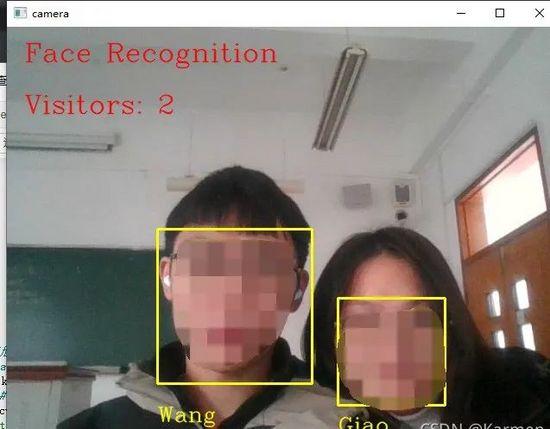
图中两人的特征数据集均已被收集并录入,所以可以识别出来,如果没有被录入的人脸就会出现unknown。

没有吴京叔叔的数据集,所以他是陌生人
原文地址:https://www.toutiao.com/article/7051461171253150221/
版权声明:本文内容由互联网用户自发贡献,该文观点与技术仅代表作者本人。本站仅提供信息存储空间服务,不拥有所有权,不承担相关法律责任。如发现本站有涉嫌侵权/违法违规的内容, 请发送邮件至 dio@foxmail.com 举报,一经查实,本站将立刻删除。

